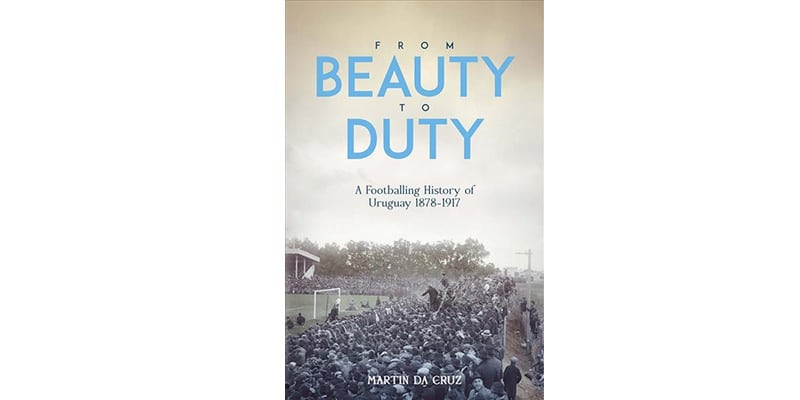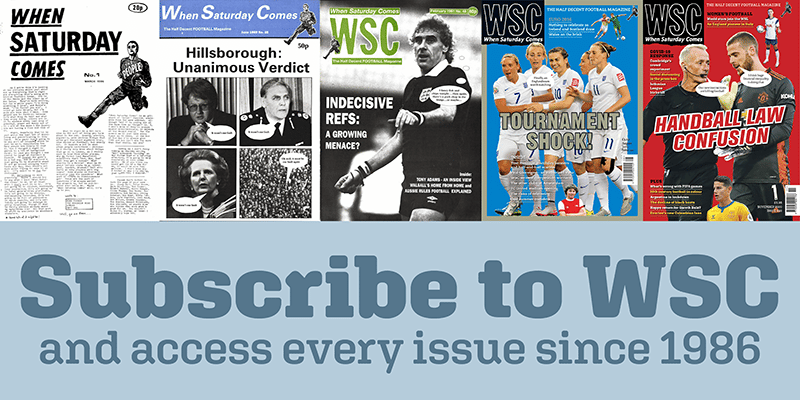
Pitch Publishing, £18.99
Reviewed by Marcus Haydon
From WSC 427, January 2023
Buy the book
By winning two Olympic titles in the 1920s and the inaugural World Cup on home soil in 1930, Uruguay demonstrated it was a nation that, even within the context of football’s exponential growth in the late 19th and early 20th centuries, had been remarkably quick on the uptake. In From Beauty to Duty, Martin da Cruz looks to deconstruct how this popularisation took hold so rapidly, chronicling football’s development from its arrival with the British in the late 1870s, through to Uruguay’s hosting of the Campeonato Sudamericano (later Copa América) in 1917. Indeed, so committed is the book to its stated scope that, besides mention of the 1924 Olympic title in the prologue, no other reference is made to any of Uruguay’s subsequent triumphs.
Da Cruz highlights the clear parallels present in the early development of the game in Uruguay and neighbouring Argentina. Growth was primarily concentrated in the two port capitals, Montevideo and Buenos Aires, with the British introducing football behind their “cultural walls” of exclusive schools and sporting institutions. But, with the British community in Montevideo far smaller in size, their control was more quickly eroded.
The book notes that by the time the first dedicated football club was founded in 1891, there had already been a criollo (native-born Uruguayan) rebellion within Montevideo Rowing Club, fed up with British intransigence in the face of a growing native membership. That first football club, paradoxically named Albion, established a statute in which foreign-born members were explicitly banned, setting the tone for the game’s nationalisation. Da Cruz weaves this theme through the origin stories of a handful of influential clubs, including Uruguay’s two grandes: the British-owned Central Uruguay Railway Cricket Club (CURCC) – who later split from the railway company to become Peñarol – and their fierce rivals Club Nacional de Football, who defined themselves as an exclusively criollo institution.
Games were played in public spaces and quickly attracted crowds in their thousands. This popularity was recognised by the state who identified football’s potential as a centralising force in a young, immigrant nation still seeking a unifying identity. And while football remained technically amateur, competition was fierce enough that clubs had little choice but to open up to wider demographics to avoid being left behind.
Into this perfect storm came Uruguay’s social development, with universal primary education and an explosion of written press, which quickly became preoccupied with commenting on the game. It’s from here that the author extracts some of the richest insights, admitting to “jamming up multiple microfilm readers” in what appears to have been a methodical synthesis of the media coverage of the era. In among this are revealing individual stories such as that of Juan Delgado, victim of the contradictory attitudes towards the Afro-Uruguayan population, being both consistently overlooked by selectors but then haughtily defended against foreign bigotry; and Héctor Gómez, a tireless young administrator who ended up as the inaugural president of Conmebol.
Much of this is already well-trodden territory in Spanish-language literature, but the subject has deservedly been opened up here to a wider audience. In doing so, Da Cruz has painstakingly assembled an engaging account of a young nation emerging into modernity at breakneck speed, with football acting as a vital democratising force.
This article first appeared in WSC 427, January 2023. Subscribers get free access to the complete WSC digital archive
Tags: Uruguay
